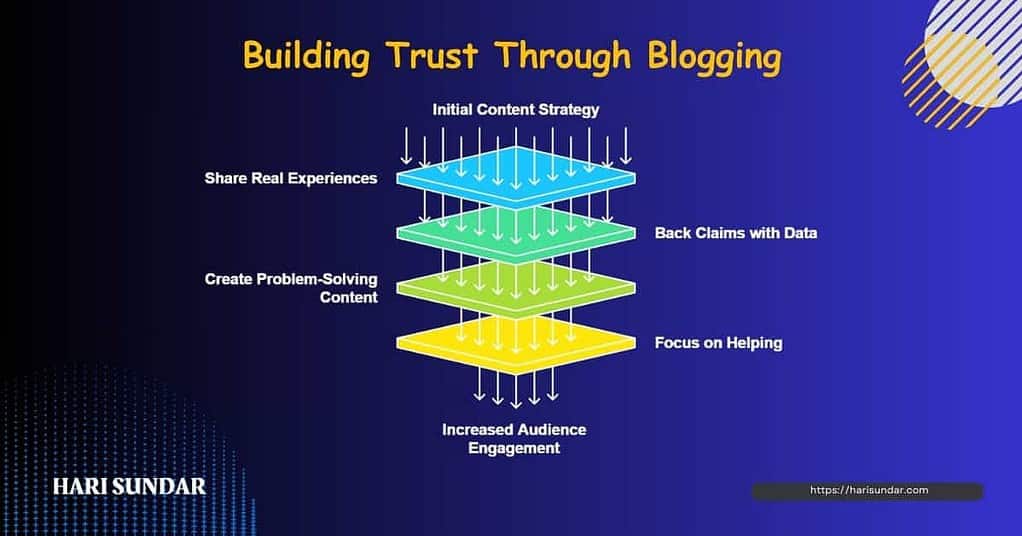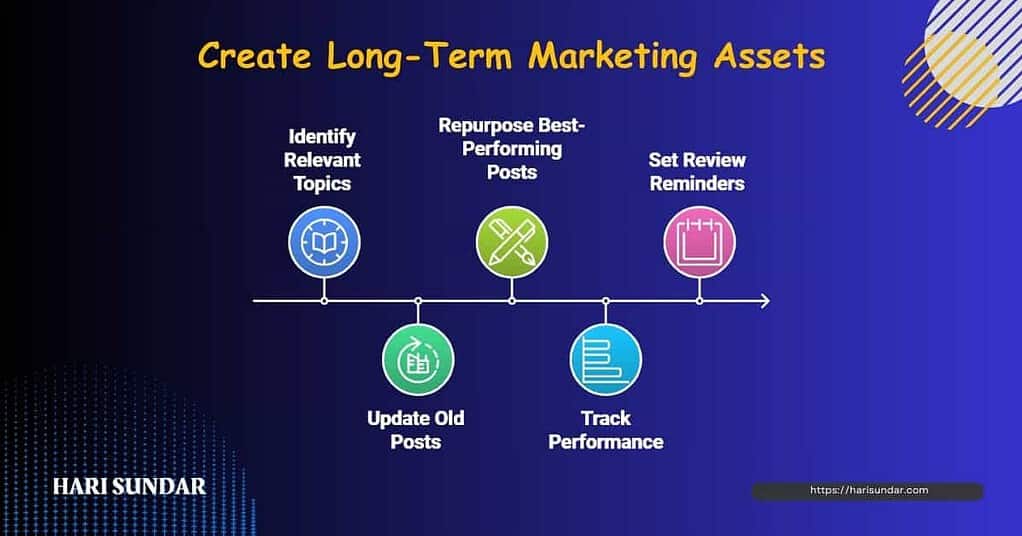5 Proven Benefits of Blogging for Marketing Success [2024]

Did you know marketers who make blogging their priority are 13x more likely to see positive returns on their efforts?
I learned this the hard way, starting with a basic Blogger site and “copy-paste” content, I watched my first blog sink into digital obscurity.
There was no traffic, no leads, and no results.
But that failure taught me something valuable—blogging for marketing isn’t just about publishing posts; it is all about the right strategy.
The benefits of blogging for marketing are not just getting traffic and making some cash, you can go beyond that.
My journey from a failed blog has shown me what works and what doesn’t. After investing in proper training and learning the right strategies, I’ve seen firsthand how blogging transforms marketing results.
In this article, I share the 5 real benefits of blogging for your marketing – backed by data and tested through experience.
After Reading This Guide, You’ll Be Able To…
- 💰 Turn Your Blog Into a Lead Machine
- 🎯 Generate leads organically through blogging
- 📈 Build Content That Brings Forever Traffic
- 🔍 Rank Higher with focused strategies
- 💡 Measure Your Blog’s Real Results
Ready to grow?
Let’s break down how you can use blogging to gear up your marketing efforts, and more importantly, how to make blogging work for you.
1. Boost Lead Generation Without Paid Ads

Interestingly, companies with active blogs generate 67% more leads monthly than those relying solely on paid advertising.
Though organic ranking takes more time than paid ads, I know that If I rank for a specific keyword, I will get more consistent traffic than running paid ads every time.
The math is simple. A well-written blog post costs around 100-300 dollars to create (if you’re outsourcing), but if you’re on the right track, it will keep bringing in leads for years.
Compare that to paid ads where you might spend 200-1000 dollars monthly for leads that stop the moment you pause your campaigns.
Blog posts are like digital salespeople who work 24/7 without asking for a raise.
If your blog posts have the right search intent, they will attract the right people who are actively searching for solutions, not just scrolling through social media.
When someone finds your blog through a Google search, they’re already interested in what you offer – that’s half the battle won!
So I write blog posts that actually solve the user’s problems and end his search journey.
Instead of focusing on generic “digital marketing” posts, I created detailed guides on individual sub-niches in digital marketing. This approach naturally attracted qualified leads who were struggling with the same issues.
To maximize your blog’s lead generation potential, follow these proven blogging best practices:
Target Problem-Solving Keywords
- Focus on search terms showing buying intent
- Example: “best email marketing software for small business” vs just “email marketing”
Optimize Lead Magnets
- Offer downloadable resources related to your post topic
- For example, a good lead magnet might be a simple SEO checklist that works well.
Strategic CTAs Placement
- Add calls-to-action after solving a specific problem
- Test different CTA positions (I found mid-post CTAs convert better than end-post ones)
The best part? Blog-generated leads often convert better because they found you through their own research.
But here’s something crucial: building trust matters more than pushing for quick sales. You might be wondering – how exactly do you build that trust through content? Let’s get into that next.
2. Build Trust Through Valuable Content

Trust isn’t something you can buy with ads. Here’s proof: 70% of people prefer learning about companies through articles rather than advertisements. People need real solutions, not sales pitches always.
I learned this firsthand when I switched from copying content to sharing my actual digital marketing experiences. The difference I saw? My first blog got zero traction.
But when I started writing about the challenges I faced with SEO and content creation, including my failures, readers started engaging. Why? Because they faced the same struggles, too.
Building your personal brand through blogging isn’t about pretending to be perfect. It’s about being helpful and real. Here’s what actually works:
Share Real Results (Good and Bad)
- Document your journey
- Include specific numbers and outcomes
- Example: When my first blog failed, I shared what went wrong and how I fixed it
Back Claims with Data
- Use current industry statistics
- Show before/after results
- Add screenshots of analytics when possible
Create Problem-Solving Content
- Step-by-step tutorials
- Troubleshooting guides
- Quick tips that work immediately
The key? Focus on helping, not selling. I saw my traffic increase when I stopped trying to sound like an expert and started writing like someone who’s figured things out through trial and error.
A simple format I follow:
- Problem: State the issue clearly
- Solution: Share what works (and what doesn’t)
- Proof: Show real results
- Next Steps: Give actionable tips
But building trust is just the start. The magic of blogging is your content becomes a permanent marketing asset that works for you 24/7. How you can do that? let’s begin.
3. Create Long-Term Marketing Assets

Unlike social media posts that disappear in 24 hours, blog posts keep working for you year after year bringing consistent traffic and generating revenue.
To create a blog content strategy that lasts, think of each post as a long-term investment. Here’s what I do to make my content work harder:
Pick Topics That Stay Relevant
- Focus on problems that don’t change quickly
- Example: “How to write better headlines” vs “Instagram updates 2024”
- Target questions people will keep asking
- Update Old Posts to Keep Them Fresh
Quarterly content check:
- Update statistics with newer data
- Add recent examples
- Remove outdated information
- Fix broken links
- Add new sections based on comments
Turn your best-performing post Into Multiple Assets
- Create short video tutorials
- Design simple infographics
- Write email newsletters
- Make social media snippets
- Build downloadable checklists
The secret? Don’t just publish and forget. I track which posts bring consistent traffic using Google Analytics and focus on improving those first. It’s like compound interest – small improvements add up over time.
Pro tip: Set a reminder to review posts every 3 months. I flag posts that:
- Drop in traffic
- Have outdated information
- Get frequent comments
- Rank on pages 2-3 of Google
But what if you’re not tech-savvy? No problem, because you don’t need to be a technical expert when you’re starting. I didn’t when I started.
Now I will show you how blogging improves your SEO naturally without needing to be a technical expert.
4. Improve SEO Without Technical Expertise

Looking at complex SEO guides used to give me headaches. That’s why many professionals start a blog as their first step into SEO – it’s simply easier to learn by doing.
When I started blogging in 2019, I ranked many blog posts without knowing a single thing about technical SEO. (That’s my abandoned blog)
How? By writing about what I knew. Google likes natural, helpful content – and that’s exactly what blogging creates.
Here’s what moves the needle in SEO, with no coding required:
- Write Like You Talk
- Bad example: “Utilizing methodologies for search engine optimization”
- Good example: “Ways to rank better on Google”
- Learn basic SEO techniques, start with simple, clear writing
- Connect Related Posts – My simple linking strategy:
- Link to 2-3 related posts in each article
- Use natural phrases as links
- Group similar topics together
- Keep content fresh
- Focus on Helping Readers – Signs Google notices:
- Time spent reading
- Comments and discussions
- Shares on social media
- Returning visitors
You don’t need fancy tools or technical knowledge. The key? Focus on writing helpful content first, then optimize it naturally.
Speaking of growth – want to know how to measure if your blog is making money? The next section breaks down exactly how to track your blogging ROI.
5. Maximize Content ROI Through Blogging

9 out of 10 marketers use blogging to hit their content goals. Looking at my own blog’s performance over months showed me why – quality posts keep bringing value long after they’re published.
Measure your blog’s ROI with this simple tracking system:
- Calculate Content Investment Per post. Costs:
- Writing time: 2 hours × $20/hour = $40
- Research: 1 hour × $20/hour = $20
- Images/formatting: 30 mins × $20/hour = $10 Total: $70 per post
- Track Key Metrics Monthly Per post. Averages:
- Visitors: 200-300
- Newsletter signups: 6-8 (3% conversion)
- Social shares: 15-20
- Comments: 5-10
- Backlinks: 2-3
- Measure Growth Over Time. 3-month results:
- Traffic growth: 25%
- Search rankings: 5-6 new keywords
- Email list: 20-25 new subscribers
- Brand mentions: 3-4
Learning to blog effectively is about playing the long game. I track:
- Which topics resonate most
- Best-performing headlines
- Content lengths that work
- Popular content types
Don’t chase quick wins. My most successful posts took 2-3 months to gain traction, but they’ve been bringing steady traffic ever since.
Three ROI boosters that worked for me:
- Create downloadable resources
- Update old posts with new information
- Build topic clusters around main themes
Focus on helping first, measuring second. Good content naturally attracts an audience over time – that’s the real ROI of blogging.
Conclusion
As we conclude, now you have the knowledge of the benefits as we discussed. Blogging for marketing is your long-term investment for your business growth.
Blogging takes time, definitely months to see results, don’t look at blogging as a short-term or get-rich-quick scheme.
The statistics speak for themselves: from 67% more leads to 13x better ROI, blogs deliver real results when done right.
I’ve seen this transformation firsthand, from my early struggles with copied content to building a strategy-driven blog, I’ve learned that success comes from consistent, purposeful effort. No shortcuts, just smart work.
Now, are you ready to transform your marketing through blogging?
Start by choosing one benefit to focus on – whether it’s lead generation, trust building, or SEO improvement.
Have a solid strategy that helps you achieve your blogging goals and watch your results grow over time.
Now it’s time to wrap things and if you have any doubts or questions, feel free to ask me in the comments, I am here to help you.
FAQs On Benefits of Blogging for Marketing
Is blogging still worth it for marketing in 2024?
Absolutely. Recent data shows companies with blogs get 67% more leads monthly. My own experience proves this – consistent blogging brings steady organic traffic without constant ad spend. It’s a long-term investment that keeps working while you sleep.
How long does it take to see results from blog marketing?
Most blogs take 3-6 months to gain traction. I started seeing consistent traffic after month 4. Focus on creating helpful content and building topic clusters. Don’t expect overnight success – good blogging is about patience and persistence.
What’s the ideal blog post length for marketing?
There’s no magic number, my average word count is around 1,500-2,000 words. They rank better because they thoroughly answer reader questions. Quality matters more than length – cover your topic completely without fluff.
How often should I publish blog posts for marketing?
Start with 2-3 quality posts monthly. I tried posting daily at first and burned out fast. Consistent, well-researched content twice a month beats rushed daily posts. Focus on solving specific problems your audience has.
What makes a blog post rank well on Google?
Clear writing that answers search intent works best. My posts started ranking when I stopped trying to sound fancy and just helped solve problems. Focus on natural keywords, good structure, and valuable information.
Should I update old blog posts or write new ones?
Do both. I update top-performing posts quarterly with fresh data and examples while publishing new content. Updated posts often see 30-50% traffic increases. It’s easier than creating new content from scratch.
How do you measure if your blog marketing is working?
Track monthly visitors, email signups, time on the page, and rankings. I focus on conversion metrics over vanity numbers. Watch how visitors move through your site and what content drives actual business results.
What’s the biggest blogging mistake to avoid in marketing?
Copying competitors instead of sharing unique insights. My first blog failed because I just rewrote others’ content. Share your real experiences and solutions – that’s what readers value.






